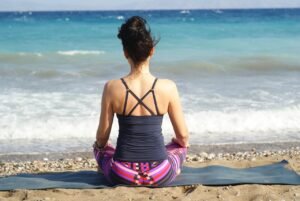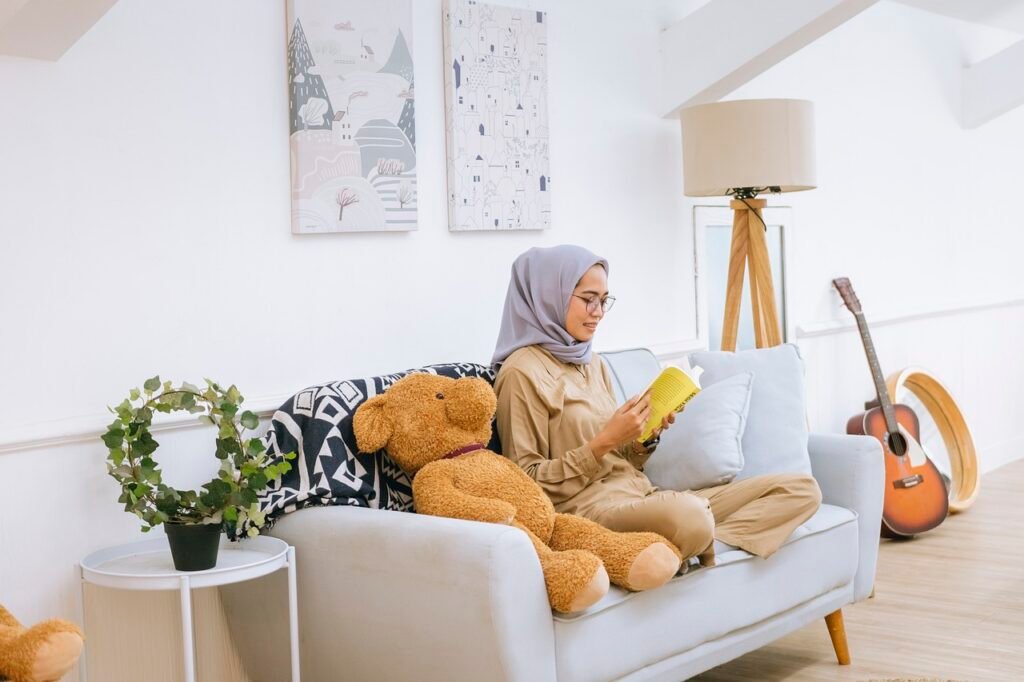Let’s admit it! Mindfulness and self-care are such buzzwords these days, they’ve almost become static-ky white noise in the background of our lives.

And I’ll be the first to admit that self-care can be a very fluffy topic, by which I mean it’s all about beautiful sounding words but very few concrete action steps that one can actually take. Unless, it’s the uber-impractical (and dare I say, masculine!) sort, like the exhortation to join the 5 AM club.
Which is all very well if you’re naturally an early bird, and even then, most mums I know who wake up at 5 AM are doing so to get their household chores done before the rest of the family wakes up and demands five different types of breakfast before being chauffeured to schools at opposite ends of town!
And then there are the mums with broken sleep due to young ones who keep them up at night, and those who get to bed at nearly 5 AM because they’re burning the midnight oil working on their biz, because the only time the house is quiet enough for them to think is when everyone else is asleep.
So, here’s the deal, ok?
I’m NOT going to ask you to wake up at 5 am or to contort your body into positions that resemble the pretzel you crave for breakfast (with a chocolate dip on the side, of course!). Nor am I going to ask you to do anything esoteric, like chant Sanskrit mantras backwards while standing on your head.
The truth is mindfulness is one of the most practical self-care activities ever, and it only needs one simple tool, that is free and always available to you, and one that you (have to!) take with you wherever you go. And that tool is…
*** drum rolls please ***
…your body!
Did I hear you gasp? I certainly did when I first realized that although it’s called ‘mind’fulness, the way in we access it is through our bodies. (And don’t even get me started on the mind-full versus mind-ful puns!)
Mindfulness is simply the non-judgemental awareness of the present moment. And if you find that definition (which is super accurate and very boring!) too wordy, here’s something solid to build your mindfulness foundations on.
Mindfulness = Awareness + Compassion
Let’s start with the awareness piece of the equation, especially since the dictionary often equates mindfulness with awareness. That’s what we mean when we say things like ‘be mindful of your words.’ But mindfulness is much more than mere awareness. It also involves pausing before you act, and then, choosing to act from a place of compassion.
Mindfulness-based exercises to increase awareness involve focusing your attention on a pre-decided anchor for a given period of time. These anchors are commonly the breath, the sensations inside our body, our bodily movements and the information that comes in through our 5 senses. Now you can see why I said that mindfulness is practiced and achieved through the body!

These four anchors form the basis of formal mindfulness meditation. And while I could describe each practice or exercise for the duration of several pages and even send you some guided audios to listen to, what I’d really like to show you right now is how to use your 5 senses to return to the present moment whenever you need to, no matter what.
When we are caught up in the throes of a strong emotion like anger, or spiralling through worry loops, the ability to return to the present moment is important because it creates a pause that allows us to access our more logical and rational brain, or even our wiser self.
Let me introduce you to a mindfulness exercise called 5-4-3-2-1 grounding practice which is extremely effective especially for those who suffer from anxiety and intrusive thoughts, but can be useful to anyone wanting a respite from overthinking or overwhelm.
The basic idea is to find 5 things you can see and name, 4 things you can touch, 3 sounds you can hear, 2 things you can smell, and 1 thing you can taste. But the actual beauty of the practice lies in allowing yourself to go slow and experience the present moment through your senses. And even going slow, it won’t take you more than a few minutes to complete.
When you look for the 5 things to name, take your time; look up and down and all around. This movement of your head on the neck is very important to help you orient to your current location and thereby signal to your mind that you are, in fact, in a physically safe space.
When you reach out for things to touch, take the time to explore the object with your fingertips and actually experience its texture and temperature. When listening for sounds, tune into both distant, ambient noises like the traffic or birds as well sounds that are closer to hand like the whirring of the fan blades in the room.
It’s harder to find things to smell and taste in the moment, but this also gives you a chance to get inventive and to personalise this exercise. You can keep essential oils close by, or raid the spice rack in your kitchen for smells that will comfort and soothe you. As for taste, I usually note any lingering flavour in my mouth or even note ‘nothing to report’ and finish the exercise. But I have heard that wasabi or even tahini can help pull one back to the present due to the pungency and earthy taste, respectively.
You can also use the 5 senses to create micro-moments of mindfulness throughout your day. This is basically a sensory snapshot of a moment in time.
For example, the first sip of that first coffee of the day… what did it feel like in your mouth? What did it taste like? What was the temperature like? You can follow the movement of the sip as it slides down your throat when you swallow it and pay attention to the muscles of your throat and mouth as they make that gulping motion. You may also be aware of the heft of the coffee cup in your hands, the temperature of the coffee inside the cup warming your hands, the texture of the cup. You may be feeling grateful for a bright sunny day with birds chirping as flowers bloom in the box garden outside your window, or you may be stressed about upcoming deadlines, aware of anxiety leaping from your belly into your chest, your heart thudding. All of this rich sensory experiential information to focus on, in just a few seconds.
You can actively look for micro-moments where you can tune into your senses and experiences throughout the day, touching base with mindful awareness in this way. Some suggestions would be while cooking, or washing the dishes, or a few bites of your meal, hugging your kids or reading to them.
Next, we come to the compassion part of the mindfulness equation and this is the active principle of mindfulness, the place where, after the pause, we get to take kind, effective action that is in integrity with our values. Compassion can be a big word to wrap our heads around, but I want to offer two insights here that will hopefully spark some shifts for you.
The first is this: True compassion always, always includes self-compassion. As mom-preneurs, we have the tendency to focus on others – our kids, family, clients and this can feel warm, and fuzzy and so good until bam! We crash land straight in burnout zone. Compassion can help prevent this experience of being depleted by making sure we include ourselves in the equation.
Secondly, it can be hard to be self-compassionate when we haven’t been taught this skill, nor had it modelled to us by the generations of women that raised us. So, a good starting point for self-compassion is to meet the needs of our body as and when they arise, and to acknowledge the meeting of these needs as an act of self-kindness.
Simply put, this means that when you realize that you’re thirsty, go grab a drink of water and remind yourself this is what kindness looks like. When you’ve been hunched up on the laptop for too long, take a moment to stretch, or maybe even walk to the window and let your unfocused gaze rest on distant trees. Rest when you’re tired, eat when you’re hungry, wee when you need to and don’t hold it in like it’s your personal super power! (Yes! This is medical and mindfulness advice rolled in one because I am both surgeon and mindfulness teacher!)
This may sound laughably simple, but starting with self-kindness in this way, by meeting the needs of your body will lay the foundation for an embodied practice of compassion that includes you.
There is, of course, a more formal compassion practice called the loving-kindness mediation, and this is the perfect place to point out that a formal mindfulness practice of even 10 minutes a day will really help you access that PAUSE. But in the meantime, I wanted to share some ways to use mindfulness in your life that you can put into action right away, immediately after reading this article.
Mindfulness is a one of the most wonderful (not to mention practical) forms of self-care because it gives you the opportunity to sit with yourself for a while, and in doing so, it signals to your whole body and being, that you are worth sitting with. And you deserve to know and experience this.
Dr Nimisha Kantharia is a surgeon and mother from Nagpur, India. She teaches mindfulness online through her membership The Middle Path – Mindfulness your way, as well as workshops and trainings. Her website has been a work in (lack of) progress since the last four months, so the best place to connect with her is on Instagram @mindfulnesswithnimisha. You can also get her free Daily Mindful Moments Journal at https://www.subscribepage.io/VUaqdt to get on her weekly email list. When she’s not studying or teaching mindfulness, you likely find her attempting to practice it through her art, writing and mothering.

